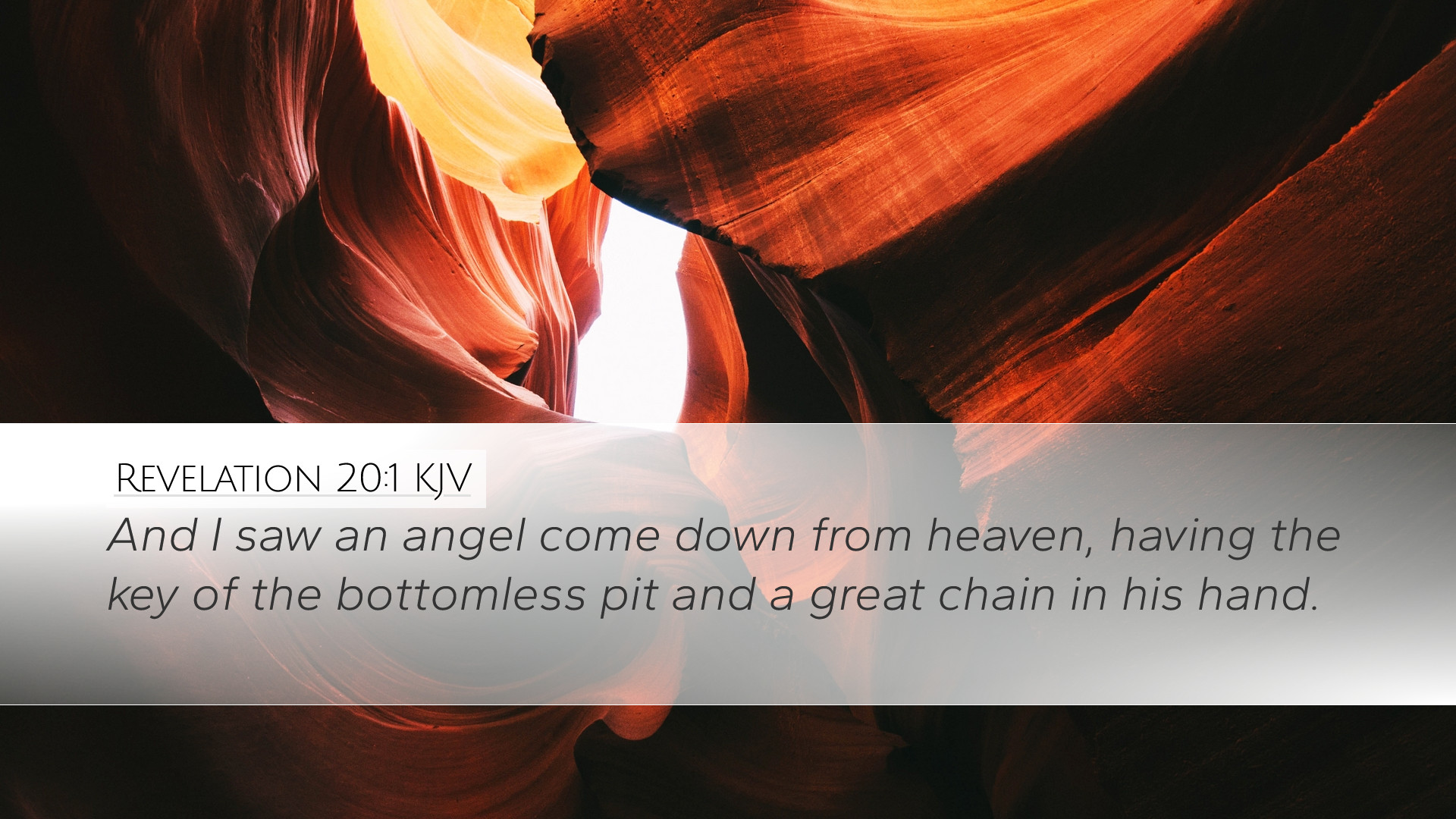Commentary on Revelation 20:1
Revelation 20:1 states: "Then I saw an angel coming down from heaven, holding the key of the abyss and a great chain in his hand." This verse introduces a pivotal moment in the eschatological narrative, marking a transition toward the ultimate victory of Christ over evil.
Introduction
This passage, pivotal in the Revelation narrative, highlights the authority of God to initiate the binding of Satan and the establishment of the Millennial reign. The imagery of the angel, the key, and the chain are ripe for exploration from various theological angles.
The Angel's Descent
Significance of the Angel: The angel's descent signifies divine authority and intervention. Matthew Henry notes that the angel is not merely a messenger but an instrument of God's power against Satan.
- Divine Commission: The angel descends with a specific task from heaven, underscoring the sovereignty of God in the affairs of the world.
- Symbolism of Heaven: This descent from heaven reflects the idea that God's authority transcends earthly powers.
The Key of the Abyss
The key represents authority over the abyss, a place of confinement for the demonic. Albert Barnes explains that this key signifies control over evil forces.
- Authority Over Evil: The key suggests that God has ultimate control, and no force can oppose His will.
- Symbol of Binding: The key also indicates the binding power of God over the abyss, establishing a physical and spiritual confinement for Satan.
The Great Chain
The "great chain" symbolizes the binding power by which Satan is to be restrained. Adam Clarke elaborates on the metaphor, emphasizing its significance in the context of spiritual warfare.
- Metaphor for Restraint: The chain illustrates the seriousness of the binding, implying an unbreakable hold over Satan's influence.
- Theological Implications: This image suggests a future time when evil will be curtailed and the reign of righteousness will prevail on earth.
Contextualization within Revelation
Understanding this verse requires placing it within the broader context of Revelation. Revelation 20 is central to the discussion of the Millennium, and verse 1 sets the stage for the subsequent verses where the Devil is bound for a thousand years.
- Transition in Narrative: This moment signifies the transition from the intense conflict between good and evil to a portrayal of the ultimate victory of God.
- Eschatological Timeline: The timeline introduced here serves to give believers hope by showcasing the limited time of evil's reign.
Theological Reflections
This text presents rich themes for contemplation including divine authority, the nature of evil, and the hope of restoration. The binding of Satan points towards the fulfillment of God’s promise to bring about a new order.
- Assurance of Victory: The binding demonstrates God's power over all opposition, assuring believers of victory in Christ.
- Restoration of Creation: The coming judgment and restoration prophesied in this chapter speak to the heart of the Gospel message.
Practical Application
For pastors, students, and scholars, Revelation 20:1 offers significant insights into spiritual authority and the hope found in Christ. Understanding the implications of this possessive authority empowers believers to stand firm against spiritual opposition.
- Encouragement in Trials: Believers can take heart in knowing that God is actively restraining evil.
- Call to Spiritual Vigilance: This passage also encourages Christians to remain vigilant, recognizing that though evil is bound, it is not eradicated until the final judgment.
Conclusion
Revelation 20:1 encapsulates a vital moment in the eschatological narrative, foreshadowing the ultimate triumph of God over evil through Christ. The imagery of the angel, the key, and the chain inspires confidence in God's sovereign plan. As we reflect on this passage, may we be drawn into deeper faith and a more profound understanding of God's triumph over darkness.


